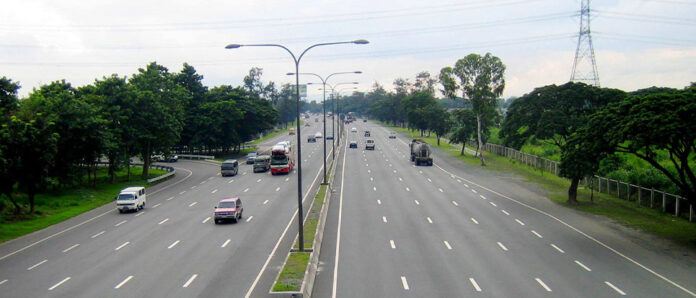-
San Miguel Corp. (SMC) completed the establishment of 156 RFID installation stations on December 29, ahead of the January 11 full implementation of cashless toll collection on Luzon expressways
-
No more long lines of motorists at stations with completion of 156 stations
-
Installation activities will continue beyond Jan 11
San Miguel Corp. (SMC) has hit its target of putting up 156 radio frequency identification (RFID) installation stations—particularly in offsite areas away from southern expressways—prior to the January 11 full implementation of cashless toll collection on Luzon expressways.
READ: SMC to establish 100 more RFID installation sites
The establishment of 156 RFID installation stations was completed last December 29, 2020, hitting the company’s commitment to finish the undertaking before the end of the year, SMC president and chief operating officer Ramon Ang said in a statement.
“With our continuous rollout of additional RFID stations which started November, and the completion of our target 156 stations by end-December, we’re no longer seeing long lines at the stations. We will continue to serve and accommodate all motorists wanting to install their free Autosweep stickers as we approach the January 11 full implementation of cashless toll collection on all expressways set by government, and even after that,” Ang added.
Autosweep is the cashless payment service SMC utilizes for its expressways.
The use of RFID stickers for cashless transaction on all Luzon expressways was ordered by the Department of Transportation and the Toll Regulatory Board as part of their toll collection interoperability project launched in 2017.
SMC, which operates the Southern Tagalog Arterial Road Tollway, South Luzon Expressway, Skyway, Ninoy Aquino International Airport Expressway, and Tarlac-Pangasinan-La Union Expressway, said it converted all but one of its 66 dedicated “onsite” or toll plaza stations into 24/7 RFID stickering stations.
It also now operates nine RFID centers, 18 gas station installation sites, 11 local government and Land Transportation Office sites, and 44 mall sites. It also has stickering sites in three major transportation terminal hubs, two home builders depots, and three showrooms. Eleven out of the 156 installation sites are by appointment to manage traffic congestion in the areas.
Ang said that the opening of more off-site stickering stations, including those in malls and government offices, is a key part of the company’s strategy to reach more non-regular users of its toll roads, who are concentrated mostly in the south.
It will be recalled that a surge in non-regular expressway users trying to beat the government’s deadline and the shortage of RFID stickers—which are manufactured by suppliers abroad—contributed to the long lines experienced in October and November last year.
Cashless toll collection was supposed to be implemented on November 2 last year, but was moved to December 1 to give motorists more time to secure RFID stickers. While implementation of the scheme started last December 1, DOTr said no apprehensions would be made until January 11.
Ang said that while the company is expecting an uptick in RFID installation as January 11 nears, it does not expect to see long lines similar to the ones experienced previously.
“With the amount of stickers we have already issued over the past few months, particularly from November through December when we started increasing the number of stations, coupled with now 156 total RFID stations that are well spread out through Metro Manila and neighboring cities and provinces, we see no major problems in serving the remaining number of motorists without stickers yet,” Ang said.
“But of course, we want to reiterate that our installation activities will continue even after January 11. There is no need to panic and rush to the stations. We will retain our installation activities and even expand programs to reach villages and barangays,” Ang added.





